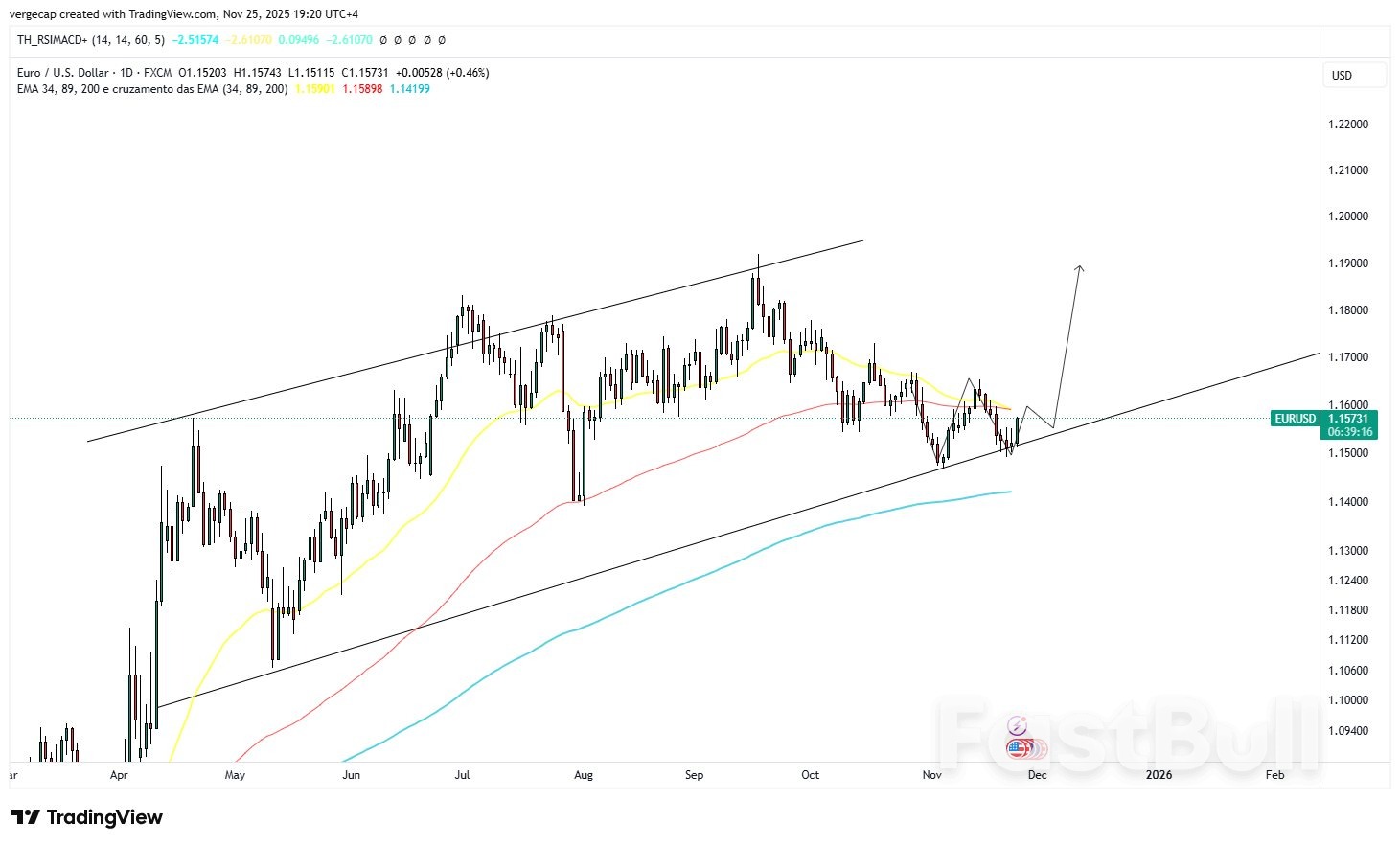The Euro climbed sharply against the U.S. Dollar on Tuesday, extending a two-day recovery as disappointing U.S. economic data weakened the Greenback and shifted market sentiment firmly in favor of a December Federal Reserve rate cut. The move helped EUR/USD rebound toward five-day highs, positioning the currency pair back inside its broader ascending structure after a brief period of consolidation.
At the time of writing, EUR/USD trades around 1.1567, gaining nearly 0.40% on the day. The U.S. Dollar Index (DXY) has slipped from its recent six-month peak, retreating toward the 99.84 region as bearish pressure intensifies. Investors appear increasingly sensitive to signs of cooling demand and softer producer prices—two dynamics that could limit the Fed’s ability to maintain a restrictive stance.
Delayed U.S. data releases for September provided a clearer window into the direction of the American economy—and the view is becoming increasingly soft. While headline Producer Price Index (PPI) data matched expectations at 0.3% MoM, the underlying components revealed weakness. Core PPI rose just 0.2%, undershooting market forecasts of 0.3% and slowing sharply to 2.6% YoY from 2.9%.
The Bureau of Labor Statistics noted that September’s gains were largely driven by rising goods prices and a notable jump in gasoline, while the services component stagnated. With services inflation flattening—an area the Federal Reserve watches closely—the disinflation narrative gained further traction.
Retail sales figures painted a similarly downbeat picture. Headline Retail Sales rose 0.2%, missing estimates of 0.4% and slowing from 0.6% in August. On a yearly basis, sales cooled to 4.3% YoY, a noticeable drop from the nearly 5% pace recorded previously.
More worrying was the Retail Sales Control Group, a key GDP input, which fell 0.1%, sharply missing expectations for a 0.3% increase. This metric often acts as a leading signal for consumption-driven growth, and its decline reinforces concerns that U.S. consumer resilience may be fading under higher borrowing costs and sticky inflation.
The latest data adds to a growing pile of evidence suggesting the U.S. economy is gradually losing steam. Labor-market indicators echoed that sentiment: the ADP Employment Change 4-week average sank into negative territory at -13.5K, its weakest in months, compared with -2.5K in the prior reading.
With inflation moderating, consumer spending cooling, and labor-market indicators sliding, investors have ramped up expectations for a December policy shift. According to the CME FedWatch Tool, markets are now pricing in roughly 84% probability of a rate cut during the December 9–10 FOMC meeting.
The prospect of earlier-than-expected easing has weakened the Dollar across the board, providing the Euro with a strong fundamental tailwind. Several Fed officials have recently signaled openness to a more accommodative stance if economic data continues to soften—something traders view as increasingly likely.
From a macro perspective, the divergence between a slowing U.S. economy and a somewhat stabilizing European outlook has helped tilt short-term momentum in favor of the Euro. While the Eurozone continues to battle subdued growth and fragmented demand, its inflation trajectory is heading firmly toward the ECB’s desired range, reducing the pressure for aggressive cuts.
Technical Analysis 
Technical indicators reinforce the bullish bias building underneath EUR/USD. The pair is currently trading inside a broad ascending structure, anchored by strong demand at the Buyer Zone between 1.1500 and 1.1510—an area that aligns with both horizontal support and the lower boundary of the rising channel.
This zone has served as a key reaction point multiple times, repeatedly generating strong bullish impulses and confirming the presence of committed buyers. Earlier in the cycle, EUR/USD broke out of a descending triangle and retested the former seller zone before sliding toward channel support, where it carved out a local bottom.
Since then, the pair has respected the primary trendline, producing a series of higher lows. A recent fake-out near mid-channel resistance showed that despite temporary dips, buyers remain firmly in control, quickly stepping in to overwhelm selling pressure.
With momentum now building again, EUR/USD approaches the 1.1600 resistance level, identified as the first major take-profit zone (TP1). This level has historically triggered corrective pullbacks, and sellers are likely preparing to defend it once more.
A confirmed break above 1.1600 would open the door toward higher levels within the ascending channel, potentially setting up a continuation toward secondary targets if Dollar weakness persists.
However, a drop below 1.1500 would invalidate the current bullish structure, exposing deeper downside levels and raising the risk of a channel breakdown. For now, the trend remains moderately bullish, supported by fundamentals and technicals aligning in favor of further Euro strength.
TRADE RECOMMENDATION
BUY EURUSD
ENTRY PRICE: 1.1580
STOP LOSS: 1.1500
TAKE PROFIT: 1.1700













